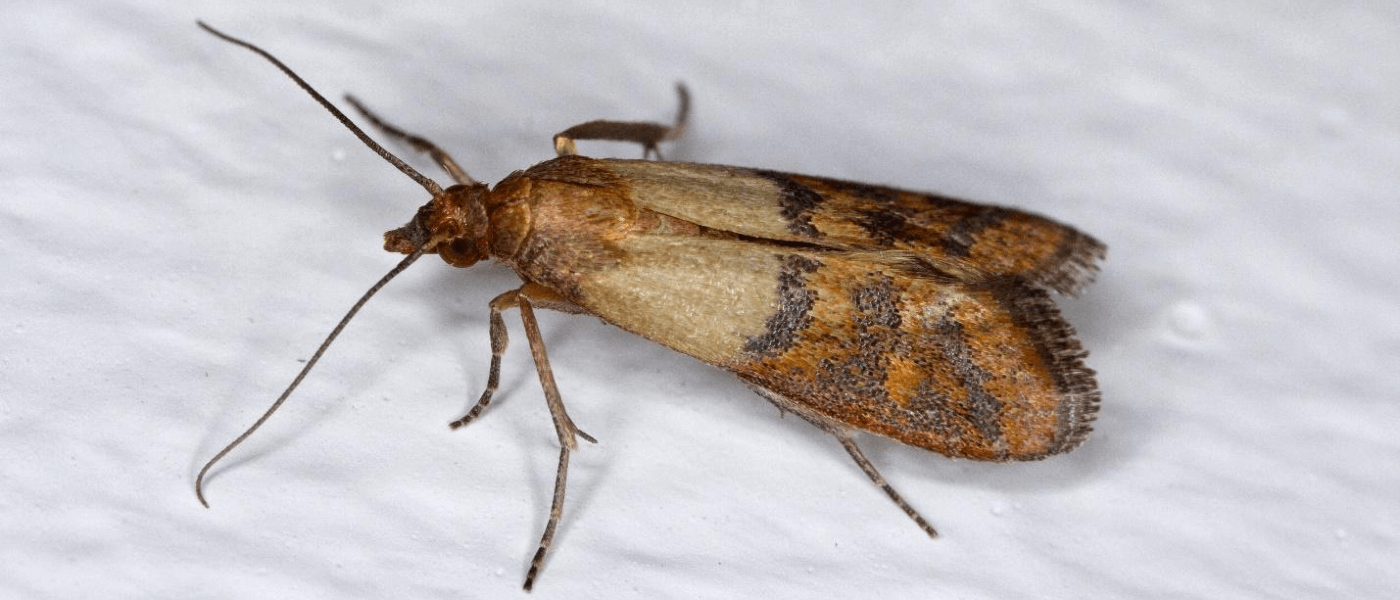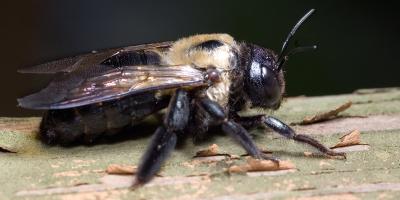Moths in the Kitchen? Here's What to Do.

It’s an unfortunate and all-too-common scenario -- no matter how clean you keep your kitchen, something still seems to attract the world’s filthiest-looking moths. You might think it’s fine to ignore these ugly cousins of the far more beautiful butterfly, but it would be unwise. Moths, you see, aren’t just unattractive -- they can also be a sign of a much uglier problem.
There are as many different moths as there are places where you might encounter them, but the moths you’re likely to see in your home generally fall into two camps: Clothes moths and pantry moths. Clothes moths, as you might imagine, are drawn to fabrics -- clothes, of course, but also rugs, linens, and even sometimes old books or other paper products.
Pantry moths are attracted to -- you guessed it -- the food you have stored in your kitchen pantry.
Pantry Pest Problems Have a Certain “Ick” Factor
While clothes moths can be quite destructive, it’s doubtful either they or their larva will ever end up in your cereal bowl. Pantry moths, on the other hand, live and breed in the food that you eat.
The most common pantry pest you’re likely to run into is the Indian meal moth. You’ve probably seen this moth without even realizing it’s a completely different species from the clothes-munching kind.
What’s even more disturbing is that Indian meal moths are but one of several so-called pantry pests, which also includes beetles and weevils. What they all have in common, however, is that all of these pests like to infest stored foodstuffs, where they’ll live and breed as long as you permit them to.
How to Tell if Pantry Pests Have Infested
If you find yourself the victim of an Indian meal moth infestation, there are several scenarios you can expect to encounter: You’ll likely have live larvae in your stored, dried food, for example, as well as other places in your home. You may even find cocoons in tucked away corners, on top of cabinets, especially.
And of course, you’ll see moths, flying and often landing around your kitchen.
Here’s the good news -- you probably don’t need to call a pest control pro unless the problem is really, really bad and you can’t seem to rid your home of it on your own. But otherwise, getting rid of and preventing further outbreaks of these pests is a relatively easy DIY project you can probably tackle in an afternoon.
DIY Your Way to a Pest-Free Pantry
The first thing you’ll want to do is inspect all your food, and we mean all of it. Sift through grains like flour and rice, pour through cereals and other dry foods. Anything that’s not sealed air-tight could be a breeding ground for meal moths.
As you’re sifting through your food store, continue to clear out any and all food storage areas until they are completely emptied. Inspect anything and everything you had stored in there. Don’t forget -- pet food is food too, so look just as closely at it as you do your own munchables.
What you’re looking for are small, white worms with black heads -- those are the larvae themselves. Also keep an eye out for sticky webbing on packages or shelves. Both in and around the various boxes and bins, you’re also looking for casings, or discarded skins, and frass, aka excrement.
If you see any signs of infestation (or, even if you don’t but you want to be thorough), discard any and all foodstuffs that may have come in contact with any insects. Next, you’ll want to vacuum the entire pantry and disinfect all the surfaces. You’ll then need to place any of the food you decide to keep into airtight, either glass or plastic containers and, remember, that includes pet food.
If you have some foodstuffs that may have been exposed but you absolutely must keep them for one reason or another, heating and freezing both effectively kill off Indian meal moths in food. You can bake for one hour at 140° (or two hours at 120°) or simply place the infested item in a freezer for four to seven days.
Pros Are Standing by if You Need Us
As a last resort, if you’re still finding moths after a few weeks of cleaning out the pantry and other food stores, a pest control professional may need to be called to help find the source of the infestation.
Sometimes an infestation may be hiding in places you didn’t expect, such as grass seed, dog food or even hidden snacks that rodents stuck in the wall voids. In these cases, while there’s no products that a service professional can use to kill them, they may still be helpful as a set of expert eyes to find the source and dispose of it to remediate the infestation.



